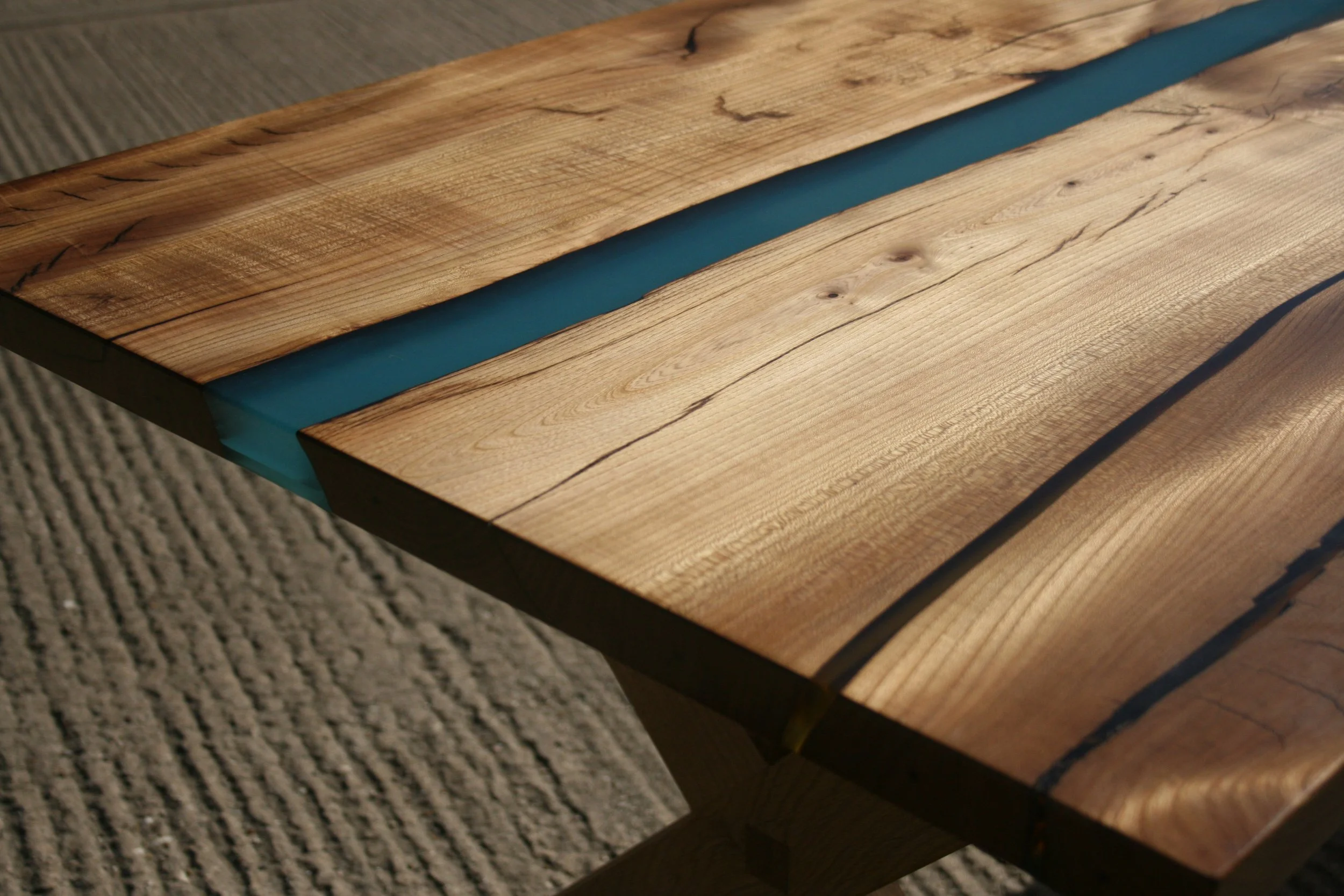Elm – A Woodworker’s Dream
Our tall and elegant native elm (Ulmus procera) once dominated the British landscape, but has been decimated by Dutch elm disease since the 1960s. In Brighton & Hove, where there are still a large number of mature elms, the council’s Arboriculture Team has recently begun using a drone to help survey the city’s elm trees. The drone allows the team to cover areas that are not easily accessible, helping them to spot signs of the disease and manage any possible spread.
There has also been extensive work in the horticultural sector to develop new disease-resistant species, which has led to the creation of a number of new ‘resista’-elms. We hope that over time we may see the majestic elm grace our countryside once again.
To celebrate this fantastic native species, here are some facts about this wonderful wood.
Elm wood uses and properties
A real timber beauty for the finest items
Elm is valued by carpenters for its striking grain patterns, making it perfect for crafting fabulous and unique timber items and furniture. Its strength and durability are also highly prized by furniture makers, as it is good at resisting splitting under stress.
The colour of elm varies from a light to a rich, warm reddish brown, with an eye-catching paler sapwood. Our customers love elm for its fine texture, unique grain patterns and the distinctive streaks that make it so striking.
Woodworkers appreciate elm for its ease of workability and its uniform texture. It cuts, sands and polishes easily, in addition to the fact that it glues and stains well. Elm’s excellent tonal qualities also make it a popular choice for stringed musical instruments.
Where is elm wood from?
Elm wood predominantly originates from North America, Europe and Asia. Historically, it has been a staple in furniture making and construction due to its durability and resistance to splitting.
In North America, American Elm (Ulmus americana) was previously a common sight across the eastern and central states, thriving in the moist, fertile soils of riverbanks and floodplains. However, unfortunately, the introduction of Dutch elm disease in the 20th century decimated much of the American elm population, but efforts in breeding and conservation continue to keep American Elm alive.
Although, Europe is also home to several significant elm species, such as British Elm (Ulmus procera) and Wych Elm (Ulmus glabra). British Elm is often associated with the countryside of England, shaping both landscapes and urban areas. While Wych Elm originates from the woodlands of Scotland and other parts of Northern Europe, renowned for its robust nature and beautifully curved branches. European elms have been integral to the region's woodworking traditions, from shipbuilding to beautiful furniture crafting.
In Asia, Siberian Elm (Ulmus pumila) thrives in China and Siberia. This hardy species is known for its resistance to harsh climates and poor soil conditions, making it a versatile and resilient source of timber. The Siberian elm's adaptability has allowed it to be used extensively in rural architecture and everyday items, providing a reliable material where other trees might struggle to grow.
Burr Elm
Burr Elm can be pure burr or partly burred and is generally more richly coloured than the surrounding plainer timber. The wood is cut from the protruding growths on a tree which have grown as if in a deformed manner; some trees are heavily burred almost all the way to their heart and all along their length, while others have small numbers of individual burrs protruding. Because the grain in a burr is so wild and goes in many different directions it resists splitting and is fairly stable.
Burr Elm is one of the rarest and most sought-after figure woods. It is a rich looking timber varying in colour from pale pinkish to white, with light and dark grain and brown or black pecking and cluster markings. The wood is highly sought after for luxury furniture and decorative objects because of its natural beauty and durability.
Is Elm a good wood and why is it expensive?
A premium product
Although elm costs more than some of our other native timbers, its higher price is justified for a number of reasons. The price reflects the fact that while elm is deservedly popular, there is limited availability (due to Dutch Elm Disease). It also reflects the time and effort required to harvest and process the timber and the special and desirable qualities of the wood.
Elm wood: the best of British timber
To conclude, Elm is a valuable timber to all who work with and appreciate the best of British timber. Its exquisite appearance, strength and great durability make it the preferred option for many high-end furniture and woodworking projects. If you’ve never worked with elm before we hope we’ve inspired you to have a go at creating something spectacular!
Here at WL West Timber we stock British elm blanks, as well as beautiful live edge boards. Take a look at our online shop or pop in to see us at Selham, West Sussex to view a wider range of British elm products.
WL West Timber is a family-owned sawmill & timber merchant in West Sussex with over 155 years’ industry experience. We provide a wide range of air-dried oak and kiln-dried oak timber products and supplies. We also build and install custom projects for our customers.
For more news, tips and updates, follow us on Facebook, Twitter, or Instagram.
For entirely finished products, timber supplies or woodworking tools, have a look at our online shop.





